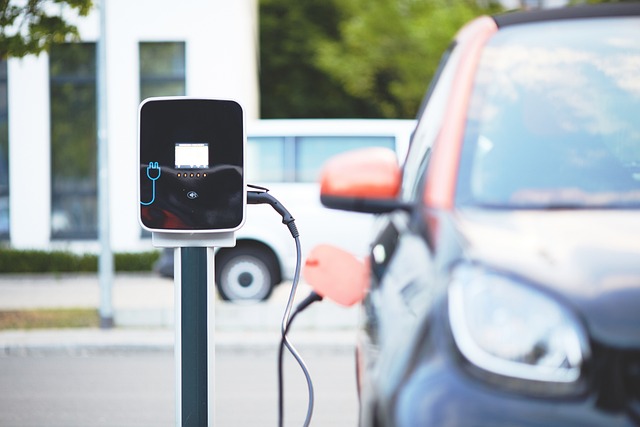Reducing Fleet Emissions Through Intelligent Route Planning
Intelligent route planning can significantly lower fleet emissions by reducing idle time, optimizing distances, and coordinating charging for electrified vehicles. Combining telematics, routing algorithms, and real-time analytics helps operators reduce fuel use and improve utilization while meeting regulatory and safety requirements across diverse operating environments.

Reducing fleet emissions requires a mix of operational changes and technology adoption focused on minimizing wasted miles, idle time, and inefficient vehicle usage. Intelligent route planning brings together telematics data, routing optimization, and predictive analytics to create schedules and routes that reduce fuel consumption and battery drain. By coordinating charging windows for electrified vehicles, accounting for maintenance needs, and incorporating safety and compliance constraints, planners can cut greenhouse gas output while maintaining service levels and reliability.
How does telematics improve routing?
Telematics supplies the raw, time-stamped data that makes intelligent routing effective: vehicle location, speed, fuel or battery status, driver behavior, and idle time. Feeding that data into route-planning systems lets dispatchers identify avoidable detours, cluster nearby stops, and minimize time in congested corridors. When telematics is integrated with live traffic and historical patterns, routing adjusts dynamically to reduce stop-start driving and long idle periods, both of which increase emissions. Effective telematics also supports driver coaching to reinforce fuel-efficient behaviors that compound routing gains.
Can electrification and charging be planned?
Electrification introduces charging constraints into routing: range, charging speed, and charger availability. Intelligent planning balances route length, payload, and charging windows to avoid unnecessary range anxiety and unplanned charging stops. Scheduling vehicles to take routes that end near charging hubs or arranging staggered charging during low-demand hours can reduce grid stress and idle time. Route planning that models state-of-charge trajectories across a shift helps fleets maximize battery use while minimizing time spent charging mid-route, lowering overall operational emissions footprint.
What role does autonomy and safety play?
Autonomy can stabilise driving patterns, reducing abrupt acceleration and braking that increase fuel consumption. Even partial autonomy features—lane-keeping, adaptive cruise, and automated braking—contribute to smoother driving and lower emissions. Safety must be embedded in routing decisions: routes should avoid hazardous roads, long detours that push drivers into fatigue, and conditions where autonomous systems may be less effective. Combining autonomy data with safety telematics enables planners to prioritize routes that optimize both emissions and risk profiles.
How do maintenance and diagnostics reduce emissions?
Proactive maintenance informed by onboard diagnostics prevents efficiency losses from worn components, incorrect tire pressure, or engine issues. Routine diagnostics identify problems that increase fuel consumption or reduce battery efficiency before they compound. Intelligent routing can factor in vehicles’ diagnostic statuses—assigning high-efficiency routes to vehicles in optimal condition and reserving more forgiving or shorter routes for units requiring service. This coordination reduces the chance that a single poorly performing vehicle inflates overall fleet emissions.
How do connectivity and analytics guide planning?
High-quality connectivity ensures real-time telemetry reaches analytics platforms where routing decisions are made. Analytics synthesize historical performance, traffic patterns, weather, and charging network status to produce routes that minimize emissions over time, not just for a single trip. Machine learning models predict where congestion will occur and which route alternatives deliver the best trade-off between time and energy use. Connectivity also enables two-way updates: drivers receive revised routes and schedules that reflect the latest conditions, maintaining emission reductions throughout the day.
How do cybersecurity and compliance affect routing?
Routing systems touch sensitive operational data and must be resilient against tampering that could disrupt efficiency gains. Cybersecurity protections maintain integrity of telematics and routing commands so vehicles follow optimised plans reliably. Compliance considerations—hours of service, emissions zones, and local regulations—must be encoded in routing rules to avoid penalties and ensure legal operation. Route planners should balance regulatory constraints with optimisation goals, ensuring routes meet emissions standards while respecting safety and labor rules.
Conclusion Intelligent route planning reduces fleet emissions by coordinating telematics, electrification, autonomy, maintenance, diagnostics, safety, cybersecurity, connectivity, and analytics into a cohesive operational approach. The best outcomes come from systems that combine real-time data with predictive models, factor in charging and maintenance constraints, and enforce safety and compliance rules. Over time, these practices yield measurable reductions in fuel use and emissions while maintaining fleet productivity and reliability.





